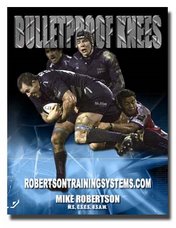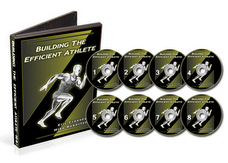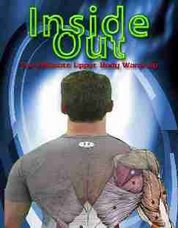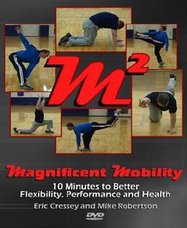Below is a Q&A question from Geoff's interview that we didn't receive in time to make the newsletter. If you want to post questions to our interviewees, make sure to send them in early!
Q: As an olympic lifter, it is taken for granted that you will go to the deepest squatting level possible, ie calves touching hamstrings. (Q) How do you feel about holding that position unloaded to rest, as is a popular pose in asia, instead of sitting as we westerners are notorious for?
...I have read some information that advises against this because of the levering effect the knees are subjected to in the bottom position. Of course I have also read articles that suggest that this is a great pose to regularly assume, and given that olympic lifters do get in this position while heavily loaded would suggest that it is safe.
A: I have two questions in response to your question:
"Why do you want to hold this position as those in Asia do--what is your expected outcome for doing so?"
Do you intend to assume this position in order to increase your OL mobility?
As an OL myself, I taught myself to transition from a PL style-squat to an OL squat by doing the very same thing you are suggesting, in a "grease-the-groove" style program (see Pavel's "Naked Warrior" for more info on GTG), so I think it's an outstanding idea. However, there are some major caveats here:
As OL's, we do not sit in the bottom position--we drop into it and explode out of it and under load. The governing rule of physiological adaptation is the SAID Principle--Specific Adaptation to Imposed Demand. Which means you will ALWAYS get EXACTLY what you train for. So, if you want to be good at sitting in the hole, then sit in the hole for a long period of time. I personally don't want to be good at sitting in the hole--I want to be great at exploding out of the hole with as much weight as possible.
Upon closer inspection, position wise, the Asian "squat sit" is different from the OL Squat. The Asians sit with their tales tucked under them and their chests collapsed--EXACTLY THE OPPOSITE of the position we need to maintain in the hole with weight over our heads or across our shoulders. Refering back to point number 1, if you practice this squat for extended periods of time, then it is very likely that this will interfere with your OL technique.
So, your best bet to increase your OL squat mobility is to do what I did--short, fatigue-free sessions of bodyweight squatting, concentrating on awareness in that position. Mike and I wrote an article for T-Nation awhile back, "Olympic v. Powerlifting Squats." Check out the "Prying" we discuss.
High Octane Corrective Exercise and Performance Enhancement | www.RobertsonTrainingSystems.com
Monday, March 10, 2008
Subscribe to:
Post Comments (Atom)









No comments:
Post a Comment